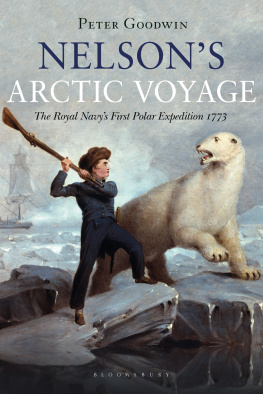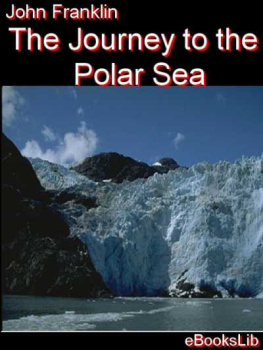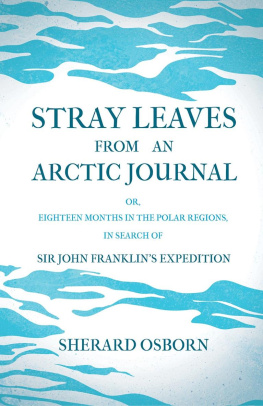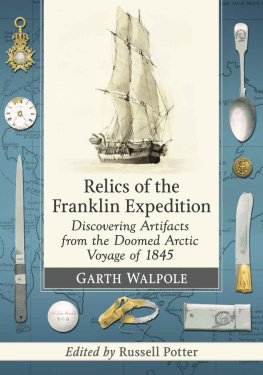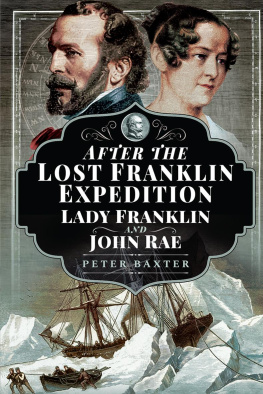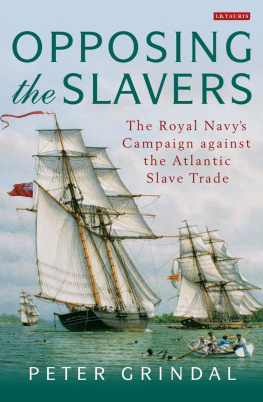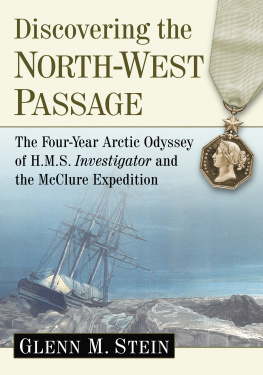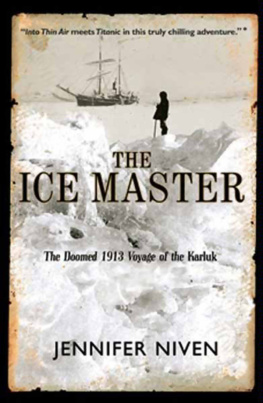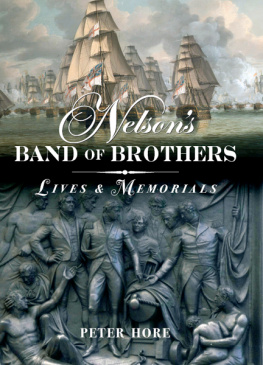Peter Goodwin - Nelsons Arctic Voyage : The Royal Navys first polar expedition 1773
Here you can read online Peter Goodwin - Nelsons Arctic Voyage : The Royal Navys first polar expedition 1773 full text of the book (entire story) in english for free. Download pdf and epub, get meaning, cover and reviews about this ebook. year: 2019, genre: History. Description of the work, (preface) as well as reviews are available. Best literature library LitArk.com created for fans of good reading and offers a wide selection of genres:
Romance novel
Science fiction
Adventure
Detective
Science
History
Home and family
Prose
Art
Politics
Computer
Non-fiction
Religion
Business
Children
Humor
Choose a favorite category and find really read worthwhile books. Enjoy immersion in the world of imagination, feel the emotions of the characters or learn something new for yourself, make an fascinating discovery.
- Book:Nelsons Arctic Voyage : The Royal Navys first polar expedition 1773
- Author:
- Genre:
- Year:2019
- Rating:4 / 5
- Favourites:Add to favourites
- Your mark:
- 80
- 1
- 2
- 3
- 4
- 5
Nelsons Arctic Voyage : The Royal Navys first polar expedition 1773: summary, description and annotation
We offer to read an annotation, description, summary or preface (depends on what the author of the book "Nelsons Arctic Voyage : The Royal Navys first polar expedition 1773" wrote himself). If you haven't found the necessary information about the book — write in the comments, we will try to find it.
Peter Goodwin: author's other books
Who wrote Nelsons Arctic Voyage : The Royal Navys first polar expedition 1773? Find out the surname, the name of the author of the book and a list of all author's works by series.
Nelsons Arctic Voyage : The Royal Navys first polar expedition 1773 — read online for free the complete book (whole text) full work
Below is the text of the book, divided by pages. System saving the place of the last page read, allows you to conveniently read the book "Nelsons Arctic Voyage : The Royal Navys first polar expedition 1773" online for free, without having to search again every time where you left off. Put a bookmark, and you can go to the page where you finished reading at any time.
Font size:
Interval:
Bookmark:



Contents
Foremost I thank Vice-Admiral Sir Alan Massey KCB CBE former Second Sea Lord, and my primary line manager during my former role as Keeper and Curator of his flagship HMS Victory, for kindly contributing the foreword to this book.
I also thank the following people for their invaluable contributions and assistance: friend and colleague Master Mariner Lieutenant Commander Frank Scott, RN (Retired) for his innumerable contributions regarding navigation and seamanship relative to square rigged sailing ships needed to clarify details; Andrew Choong and Jeremy Michell, Ship Plans and Photographs Department of the National Maritime Museum Greenwich, London for supplying much needed draughts and information about HM Ships Racehorse and Carcass employed for the exploratory voyage. Also, at the National Maritime Museum, Emma Beech, Emma Lefley and Scarlet Faro, for supplying illustrative material. Heather Johnson, Archive Collections Curator, National Museum of the Royal Navy, Portsmouth, for access and illustrations from Constantine Phippss original 1774 record of the voyage and Jenny Wraight, Head Librarian Naval Historical Branch Admiralty Library, HM Naval Base Portsmouth.
My thanks are also due to Susan Lumas, Naval Dockyards Society and former Archivist at the National Archives Kew for her advice regarding the search for documents. Also, the staff of the National Archive Kew, London, the Rijksmuseum Amsterdam, Tate Britain, the Royal Collections, and the United Kingdom Hydrographic Office, Taunton. I also thank Doctor Ann Shirley (formerly of the Scott Polar Research Institute Cambridge, for her advisory contribution.
I particularly thank my friend and colleague the marine artist Gordon Frickers for generously creating his incredible painting HM Sloop Racehorse North Sea Storm Arctic Expedition 1773 capturing her precarious situation on Friday 17 September, and sincerely thank him for our many historical research discussions undertaken to produce this accurate work.
Most of all I graciously thank my wife Katy: Registrar Portsmouth City Museums and Archives Service. Katy proved an invaluable professional assistant when searching and transcribing innumerable documents from the National Archives. Added to this I inevitably thank her for her treasured support and patience throughout the exacting process of compiling this book.
Peter Goodwin. Khenu Ankh Ka, Southsea, 10 May 2018.
Foreword
by Vice Admiral Sir Alan Massey KCB CBE
It is a great honour for me to introduce this remarkable book and its remarkable author, Peter Goodwin. The account of Horatio Nelsons first voyage to the Arctic latitudes as a young Royal Navy midshipman in 1773 is one of rare adventure, risk, inventiveness and fortitude under great duress. I was privileged to work briefly with Peter when I served as the Navys Second Sea Lord from 2008 to 2010, and he as long-standing keeper and curator of the wonderfully preserved and restored HMS Victory in Portsmouth Nelsons flagship at the 1805 Battle of Trafalgar. Drawing on his extraordinary knowledge of the ships, their operations and their crews in the tumultuous years of George IIIs reign, the author has documented with characteristic rigour and detail what was the Navys first officially documented polar expedition. Two hundred men, in two modestly-sized warships, set off willingly and excitedly to seek out the North Pole and a so far undiscovered north-east trade route across the top of Russia to the Pacific. Embarked alongside the naval crews were scientists, new instruments, experimental machines, meticulously compiled logistics and the profound spirit of the Age of Enlightenment: an era marked by mans irrepressible urge to make sense of the world through exploration, science and philosophy.
This gripping tale of endeavour and its rich historical context are finely drawn. The authors well-established reputation and peerless technical grasp of how ships were built, manned and sailed in those times shines through in his broader narratives around the usually clipped, laconic entries in the two ships logs. Perhaps most compelling even more so than the authoritative descriptions of the ships technologies are his references to the human factors underlying the huge day-to-day challenges of this expedition. For this is a story of leadership, determination, personal resilience and careful management, as much as of the specific skills of navigation, seamanship, and sound maintenance that, in the end and against the odds, were able both to achieve great things and to bring the ships and their people back home safe. Unsurprisingly, both ships commanding officers completely understood the importance of a clear aim, firm discipline (which as the author points out is not synonymous with tough punishment, good order, seizing the initiative and maintaining morale: cardinal principles that are still faithfully observed in todays Royal Navy. In my own personal experience of duress at sea, at peace as well as in war, those things trump all else in getting and sustaining the best of a ship and her crew: especially when bad thing happen and spirits become bruised.
Though Horatio Nelsons part in the story is a limited one he was, after all, only 14 years of age at the time he most certainly did his bit. And no doubt the tribulations of this Arctic voyage will have been formative on his subsequent passage to greatness. One can only speculate over what other turns history might have taken, had Nelson not survived this stern test of character, grit and fibre.
Alan Massey, Southsea, November 2018
Captains log HM Sloop Carcass , Sunday 1 August 1773.
Bearing & position at noon: Beset with Ice amongst the 7 islands Black point on the NEt land S 67W 3 or 4 leagues, West Island N 18 (Table Island) N 5W.
Situation: Light airs and Calms, PM laying amongst the drift Ice, and at 4 PM made fast the Ship to it, and filled our water Casks from a pool upon the Ice, at 10 PM cast the Ship loose and made fast to the Ice near the Racehorse , finding we drifted to the SE t, from here, at 11 AM a large white bear coming over the Ice towards the Ships, was shot and brought aboard the Racehorse at Noon the drift Ice round the ships considerably increased, setting in towards the SWt Shore from the North and East. Some open water between the Ships and that Shore, but no passage out to the Westward where they came in PM Variation Pr Azimuth N 17: 33W.
Captain Skeffington Lutwidge, writing in Carcass s journal in 1773, was part of a pioneering voyage to the Arctic, alongside the Racehorse , commanded by Constantine Phipps on behalf of the Royal Navy. Also serving in the Carcass was a very young midshipman named Horatio Nelson, later to become Vice Admiral Lord Nelson.
When Nelson and the rest of the expedition ventured into the unforgiving Arctic regions around Spitsbergen (today Svalbard) in 1773, few sailed this hostile area other than the European whaling fleets. As the British Royal Navys first Arctic expedition, Phippss voyage offered no strategic martial advantage. Although intended to answer a number of scientific questions, this was essentially another quest to seek a northerly sea passage to the Far East, the conceptual origins of which had far deeper roots. Influencing this quest was a European trade with the East that had existed since Roman times and was largely reliant on a long-established system of caravan routes traversing the vast continent of Asia with commodities reaching Europe through the city of Istanbul. Merchandise was also shipped from the equally important distribution city of Alexandria, Egypt. Whichever route was taken, trade to the East was subject to the political control of the interceding regions, especially after the onset of Muslim expansionism during the 7th century.
Font size:
Interval:
Bookmark:
Similar books «Nelsons Arctic Voyage : The Royal Navys first polar expedition 1773»
Look at similar books to Nelsons Arctic Voyage : The Royal Navys first polar expedition 1773. We have selected literature similar in name and meaning in the hope of providing readers with more options to find new, interesting, not yet read works.
Discussion, reviews of the book Nelsons Arctic Voyage : The Royal Navys first polar expedition 1773 and just readers' own opinions. Leave your comments, write what you think about the work, its meaning or the main characters. Specify what exactly you liked and what you didn't like, and why you think so.

